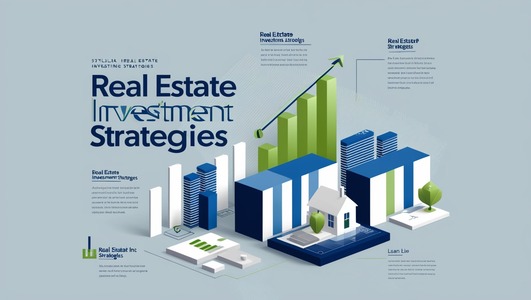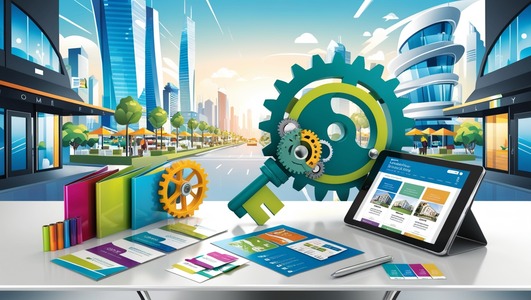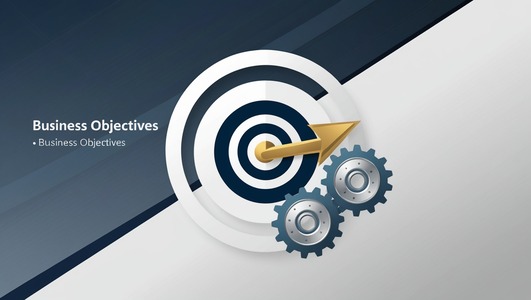How to Become a Real Estate Agent and Start Earning in 6 Months
Are you interested in starting a career in the dynamic world of real estate? Becoming a real estate agent is an excellent opportunity to generate income, build strong business relationships, and help people find their dream property. In this article, we explain how to become a real estate agent, what the requirements are, what skills you need, how to obtain a license, and more.
What Does a Real Estate Agent Do?
A real estate agent is a licensed professional who acts as an intermediary in the purchase, sale, or rental of properties. Their work includes everything from advising clients to coordinating viewings, negotiating contracts, and completing legal paperwork. In many countries, a real estate license is required to practice legally.
Why Become a Real Estate Agent?
The real estate industry offers multiple benefits How to Become a Real Estate Agent, such as:
• High job demand.
• Competitive income, with the possibility of high commissions.
• Flexible hours.
• Possibilities to work independently or through an agency.
• A career that allows for personal and professional growth.
Now let’s look at the concrete steps to achieve it.
Step 1: Research Local Requirements
Each country, and even each region, has its requirements for becoming a real estate agent. For example:
In Spain, you must obtain a degree in Real Estate Commercial Management or equivalent training.
In Latin America, in many countries, simply completing a certified course is sufficient.
In the United States, each state has a regulatory authority that establishes the requirements for granting a real estate license.
Step 2: Take a Real Estate Training Course How to Become a Real Estate Agent
A key part of the process is completing a How to Become a Real Estate Agent course. These courses teach you:
• Legal principles of buying and selling.
• Property appraisal.
• Professional ethics.
• Marketing and sales techniques.
• Managing contracts and legal documents.
Training options:
• In-person courses at real estate academies or institutes.
• Online training with official certification.
• University or technical programs.
Tip: Ensure the relevant real estate authority in your country or region endorses the course.
Step 3: Obtain Your Real Estate License
Once you complete the course, you’ll need to take an official exam (if required) and apply for your real estate agent license. This document legally qualifies you to practice the profession.
Common documents required:
• Training certificate.
• Identification.
• Proof of payment of fees.
• Criminal record check (in some cases).
In countries like Mexico or Colombia, this process may be simpler. In the US, it may even include fingerprinting and interviews.
Step 4: Join an Agency or Work Independently
With your license in hand, you can start working at a real estate agency or start your own business. Joining an established company allows you to learn, gain experience, and more easily acquire clients.
If you choose to go independent, you’ll need to:
1. Build your brand.
2. Promote your services.
3. Get leads.
4. Establish relationships with lawyers, banks, and appraisers.
Step 5: Develop Sales and Communication Skills How to Become a Real Estate Agent
Success as a real estate agent depends largely on your interpersonal skills. Some key competencies include:
• Empathy and active listening.
• Negotiation skills.
• Mastery of digital tools.
• Knowledge of the local market.
• Conflict resolution.
A good agent not only sells properties, but also sells trust.
Step 6: Use Real Estate Marketing to Your Advantage
In the digital age, a real estate agent must know How to Become a Real Estate Agent . Some effective strategies include:
• Creating a professional website.
• Using social media such as Instagram, Facebook, and TikTok.
• Listing properties on specialized portals (Idealista, Fotocasa, etc.).
• Making virtual tour videos.
• Positioning your brand with local SEO.
Step 7: Stay Up-to-Date and Keep Learning
The real estate sector is constantly changing. Laws, the economy, and market trends evolve. Therefore, it is essential for an agent to constantly update their knowledge.
You can do this through:
1. Refresher courses.
2. Seminars or webinars.
3. Reading specialized blogs.
4. Networking with other professionals.
Staying up-to-date allows you to offer a more professional service and stand out from the competition.
How Much Does a Real Estate Agent Earn?
An agent’s income varies depending on:
❶ The country or city where they work.
❷ Whether they are self-employed or for an agency.
❸ Their experience and number of closed transactions.
In general, the base salary is low or zero, but sales commissions can be very lucrative. For example:
❶ In Spain, commissions of 3% to 5% of the property’s value.
❷ In Mexico: between 2% and 6%.
❸ In the US, the average of 2.5% for each side of the transaction (buyer or seller).
Advantages of Being a Real Estate Agent
1. Job independence.
2. Opportunity to meet new people.
3. High income potential.
4.No college degree required.
Opportunity to specialize (luxury, land, rentals, etc.).
Disadvantages or Challenges
Financial instability occurs if there are no sales.
Weekend work and variable hours.
High competition.
investment in training and marketing.
Final Tips for Aspiring How to Become a Real Estate Agent
Create a strong personal brand.
Network with other agents.
Take care of your online reputation.
Offer excellent customer service.
Never stop learning and adapting.
Conclusion: How to Become a Real Estate Agent
Becoming a real estate agent can be one of the most rewarding decisions of your professional life. It’s an ideal career for those who enjoy working with people, have strong sales skills, and desire professional freedom. By following the right steps, with dedication and a commitment to continuous learning, you can build a successful career in the real estate world.
Suppose you’re passionate about this sector and willing to invest in your professional development. In that case, you now know how to become a real estate agent and achieve success in an industry with great opportunities.
Credit by Ryan Serhant
Where to Find Affordable Commercial Real Estate for Sale
In the competitive world of real estate, the Commercial Real Estate for Sale market represents a solid and profitable opportunity for business owners, investors, and entrepreneurs. If you’re looking for commercial real estate for sale, this article is your definitive guide to understanding the market, learning about the types of properties available, evaluating their profitability, and knowing how to make wise decisions when purchasing.
What is Commercial Real Estate?
The term Commercial Real Estate for Sale refers to properties used for commercial purposes, that is, to generate income. Unlike the residential sector, which is focused on housing, Commercial Real Estate for Sale includes:
Retail spaces
Corporate offices
Mixed-use buildings
Industrial warehouses
Shopping centers
Hotels and motels
Coworking spaces
Warehouses and storage units
When we talk about commercial real estate for sale, we refer to the sale of these types of properties, which represent a constant source of passive or active income, depending on the type of management.
Why Invest in Commercial Properties?
Investing in commercial properties has multiple benefits compared to the residential sector. Below are some of the main advantages of commercial real estate:
1. Higher profitability
A commercial property can offer higher rates of return on investment (ROI), thanks to long-term leases and business-oriented clients.
2. More stable leases
Commercial leases tend to be longer, which reduces tenant turnover and offers greater financial stability.
3. Income Diversification
By purchasing a building with multiple commercial spaces, you can have multiple sources of income from different businesses.
4. Appreciation Value
Well-located commercial properties tend to increase in value over time, especially in urban or developing areas.
5. Cash Flow Control
You can manage your properties directly or outsource management to specialized companies, allowing you to maximize income and minimize risk.
Types of Commercial Properties for Sale
If you’re looking for commercial properties for sale, it’s essential to know the main categories available on the market.
1. Commercial Spaces
Ideal for small businesses, retail stores, restaurants, or franchises. These properties are in high demand in downtown areas.
2. Offices
Commercial offices are located in corporate or business areas. They can be entire buildings or individual floors, ideal for service-based businesses.
3. Industrial Warehouses
Very useful for storage, production, or distribution. They are popular in industrial or logistics areas and require good road access.
4. Shopping Centers
Shopping centers or malls offer multiple leased spaces to different brands. These are high-investment properties, but very profitable.
5. Commercial Land
Ideal for developing real estate projects. It is essential to ensure proper land use and obtain the necessary building permits.
Where to Find Commercial Real Estate for Sale?
Nowadays, thanks to technology, it is possible to search for commercial properties for sale on various specialized portals. Some recommendations:
• Real estate portals such as Idealista, Realtor, LoopNet, and Properati
• Commercial real estate companies
• Direct contact with developers
• Local real estate agent network
• Chambers of Commerce or business associations
Additionally, you can conduct a local market analysis to identify high-growth areas, expanding commercial zones, or high-traffic business corridors.
Key Factors for Evaluating a Commercial Property
Before investing in commercial real estate, be sure to consider the following aspects:
1. Location
A well-located property, with access to transportation, visibility, and proximity to urban centers, will always have a higher value.
2. Profitability Potential
Evaluate how much you could earn monthly from the property by comparing rental prices in the area and calculating your ROI.
3. Legal Conditions
Verify that the property has all the necessary documentation: deed, commercial use permits, zoning, among others.
4. Physical Condition of the Property
Inspect the construction, electrical installations, plumbing, roofs, etc. Avoid properties with hidden defects.
5. Operating Costs
Include maintenance, taxes, insurance, utilities, administrative management, and possible renovations.
How to Finance a Commercial Property
Acquiring commercial real estate can require a significant investment. Here are some ways to finance a commercial property:
• Commercial mortgage loans
• Business bank loans
• Private investors or venture capital
• Real estate investment trusts (REITs)
• Self-financing or accumulated savings
• Real estate leasing (rent-to-own)
It’s essential to have a structured financial plan, assess interest rates, payment terms, and required collateral.
Marketing Strategies for Selling Commercial Properties
If you are an owner or agent and want to promote your commercial property for sale, here are some effective strategies:
1. Listings on specialized portals
Use platforms such as Inmuebles24, Lamudi, or Zonaprop to reach an audience focused on commercial real estate.
2. SEO Optimization
Use keywords such as commercial space for sale, commercial real estate available, or commercial properties for investment to appear in search engines.
3. Virtual Tour and Professional Photos
A 360° tour or professional video can increase the likelihood of a sale by showcasing the property in an attractive light.
4. Email Marketing to Investors
Send detailed property information to a database of potential investors, brokerages, or business owners.
5. On-site Signage
Place visible signs with contact information and property benefits to attract local traffic.
Common Mistakes When Buying Commercial Property
Avoid these common mistakes when searching for commercial real estate for sale:
• Not performing a detailed financial analysis
• Ignoring hidden costs
• Buying without knowledge of the local market
• Not verifying land use
• Lacking legal or technical advice
• Being driven by emotions rather than numbers
Remember that a good investment should be based on information, analysis, and planning.
Is 2025 a Good Year to Buy Commercial Real Estate?
The current real estate market outlook shows a recovery in the commercial sector, following the transformation brought about by the pandemic. New trends point to:
• Greater demand for flexible spaces
• Growth of e-commerce and the need for logistics warehouses
• Offices adapted to hybrid work models
• Increased tourism in urban areas and greater investment in hotels
All of this opens up new opportunities for smart investors who know how to adapt to change and spot opportunities before others.
Conclusion
Looking for commercial real estate for sale is one of the most strategic decisions you can make as an investor, entrepreneur, or business owner. Commercial properties for sale not only represent a safe and profitable investment but also a powerful tool for building solid and lasting assets.
Before making a decision, thoroughly analyze the market, evaluate different options, seek advice from industry professionals, and keep your financial goals clear. Whether you’re looking for short-term profitability, asset growth, or long-term passive income, the world of commercial real estate offers all of these opportunities.
Credit by Marko – WhiteBoard Finance
How to Get Into Real Estate Investing with No Credit or Experience
Real estate investing is one of the safest and most profitable ways to build long-term wealth. If you’ve ever wondered how to get into real estate investing, you’ve come to the right place. In this article, we’ll explain step-by-step how to get started in this world, even if you have no prior experience.
What is real estate investing?
Real estate investing involves acquiring properties for the purpose of obtaining financial returns, whether through rental, property appreciation, or buying and selling. Unlike other forms of investment, such as the stock market, real estate offers a tangible asset that tends to How to Get Into Real Estate Investing
Advantages of investing in real estate
Before you begin, it’s important to understand why so many people are looking into How to Get Into Real Estate Investing as a way to secure their financial future:
• Consistent passive income: By renting out properties, you can generate a stable source of monthly income.
• Appreciation in value: Over time, property values tend to increase.
• Tax advantages: There are tax deductions associated with real estate investments.
• Financial leverage: You can use external financing to acquire higher-value assets.
• Portfolio diversification: Investing in real estate reduces overall risk by not relying solely on How to Get Into Real Estate Investing.

Step 1: Basic Financial Education
Before investing, you should have a good grasp of financial concepts such as:
Cash flow
Return on investment (ROI)
Financial leverage
Operating costs
Good debt vs. bad debt
You can start by reading books like “Rich Dad Poor Dad” or “The Millionaire Real Estate Investor.” There are also free online courses that teach the basics of How to Get Into Real Estate Investing for beginners.
Step 2: Set clear goals
Define why you want to invest:
❶ Do you want monthly passive income?
❷ Are you seeking financial independence?
❸ Are you planning for a comfortable retirement?
Having a clear goal will help you choose the right strategy.
Step 3: Assess your financial situation
Before taking the first real step, review your financial capacity:
❶ Do you have a good credit score?
❷ How much capital can you invest?
❸ Are you willing to go into debt to purchase a property?
It’s possible to get started in real estate with little money, but you’ll need to be more creative with your strategies (partnerships, private financing, etc.).
Step 4: Choosing the Right Real Estate Investment Strategy
There are several ways to invest in real estate. Here are a few:
1. Rental Properties (Buy and Hold)
This involves purchasing a property to rent out and generate monthly income. It’s ideal for those seeking passive income.
Advantages: Monthly cash flow, long-term appreciation.
Disadvantages: Maintenance, tenant management.
2. Buy, Remodel, and Sell (Fix and Flip)
You acquire properties in poor condition, improve them, and sell them for a higher price.
Advantages: Quick profits.
Disadvantages: High risk, requires capital, and remodeling experience.
3. Commercial Real Estate Investment
Retail spaces, offices, warehouses, or shopping centers. They usually offer higher rents.
Advantages: Long leases.
Disadvantages: High initial investment, sensitivity to the economic cycle.
4. Investing in REITs (Real Estate Investment Trusts)
These are funds that invest in real estate. You can purchase shares in these funds, much like investing in the stock market.
Advantages: Lower initial capital, liquidity.
Disadvantages: Less control, variable returns.

Step 5: Research the local real estate market
Knowing your local market is crucial for making informed decisions. Analyze:
High-demand areas
Urban growth projections
Safety level
Nearby schools and services
Expected profitability
Tools like Zillow, Idealista, or local websites can help you compare prices, average rents, and trends.
Step 6: Financing and Loans
You don’t need all the money to invest. Here are some options:
Bank mortgages: The most common option.
Private loans: From friends, family, or investors.
Seller financing: The owner finances your payment.
Joint ventures: Partner with someone who has equity.
Carefully evaluate interest rates, terms, and closing costs.
Step 7: Property Analysis
Before purchasing, evaluate whether a property is financially viable. Analyze:
Expected rental income
Operating expenses: Maintenance, taxes, insurance, management
Estimated cash flow
Cap rate (capitalization rate)
ROI (Return on Investment)
An ROI above 8% is considered healthy in most markets.
Step 8: Closing the Purchase
Once you find a suitable property and secure financing, follow these steps:
Make a formal offer.
Have a property inspection.
Have an appraisal with an independent appraiser.
Review the contract and legal documents.
Sign the closing and register the property.
It’s a good idea to have a real estate agent or attorney guide you through this process.

Step 9: Property Management
Once you own your property, you have two options:
Self-management: You’ll be responsible for finding tenants, collecting rent, and making repairs.
Hiring a management company: Ideal if you have multiple properties or limited time.
Good management keeps your property profitable and well-maintained.
Step 10: Scale Your Portfolio
After your first investment, you can reinvest your profits and acquire more properties. This is known as scaling your real estate portfolio.
Tips for scaling: How to Get Into Real Estate Investing
Use the equity in current properties as collateral.
Reinvest cash flow.
Diversify into different types of properties.
Evaluate new geographic locations.
Common Mistakes to Avoid
Not researching the market.
Underestimating maintenance costs.
Not calculating cash flow correctly.
Investing based on emotions rather than data.
Relying too heavily on appreciation in value.
Investing in real estate requires logic, analysis, and a patient approach.
Useful Tools and Resources
ROI and Cash Flow Calculators: Ideal for simulations.
Real estate apps: Zillow, Realtor, Idealista, Fotocasa.
Networking: Agents, appraisers, lawyers, property managers.
Investor communities: Forums, social media groups, or local meetups.
Conclusion: How to Get Into Real Estate Investing
Entering the world of real estate investing can seem intimidating at first, but with education, planning, and action, you can succeed. If you’re wondering how to get started in real estate investing, remember that the first step is to educate yourself and set your goals.
Real estate investing isn’t a get-rich-quick path, but it can offer financial stability, sustained growth, and financial freedom if done correctly. Whether you’re buying to rent, selling, or simply diversifying your portfolio, real estate can be the cornerstone of your financial success.
Credit by Thach Nguyen
Top U.S. Cities with Affordable Multi-Family Homes for Sale
In the world of real estate investment, multi-family homes for sale have become an extremely attractive option for investors seeking stability, passive income, and wealth growth. This type of property offers multiple residential units under one roof, allowing owners to generate rental income from more than one unit within the same property.
In this article, we’ll explore in depth everything you need to know about multi-family properties: what they are, how to invest in them, their advantages, risks, where to find them, and how to make smart decisions to maximize your profits.
What are Multi-Family Homes?
Multi-family homes are residential buildings that contain more than one living unit. They can range from a duplex (two units) to apartment complexes with dozens or even hundreds of units.
Types of multi-family homes:
Duplex: Two units under one roof.
Triplex: Three separate units.
Quadruplex: Four units.
Apartment buildings: Five or more units; considered commercial properties.
These properties enable several families to live separately while sharing certain common amenities. They are highly sought after by investors for their potential to generate stable income.
Advantages of Investing in Multi-Family Homes for Sale

Investing in multi-family homes for sale has multiple benefits that often outweigh those of single-family properties:
1. Steady Cash Flow
With multiple rented units, the owner receives income from multiple sources monthly. Even if one unit becomes vacant, the others continue to generate rent, reducing the financial impact.
2. Scalability
It is more efficient to manage a single building with multiple units than several individual properties scattered throughout different areas. This means less effort and higher profitability per property.
3. Affordable Financing
Lenders tend to view multifamily properties as safer investments due to their ability to generate multiple incomes, which makes it easier to obtain mortgages.
4. Risk Diversification
Having more than one tenant reduces the financial risk of defaults or temporary vacancies.
5. Appreciation in Value
Multifamily properties tend to appreciate over time, especially if they are located in urban areas with high rental demand.
Where to Find Multi-Family Homes for Sale?
Today, there are numerous digital platforms and specialized real estate agents where you can find Multi-Family Homes for Sale:
Zillow
LoopNet
Redfin
Local MLS
Real estate agents specializing in multifamily properties
You can also search directly on brokerage sites or local real estate portals, especially in metropolitan areas with high population density.
How to Choose the Best Multifamily Property
Not all multifamily homes for sale offer the same level of profitability. Before purchasing, you should consider several factors to ensure a good investment:
1. Location
This is one of the most important factors. Look for properties near universities, hospitals, shopping centers, public transportation stations, and areas of economic growth.
2. Physical Condition
Evaluate the condition of the building: structure, electrical systems, plumbing, roof, etc. A home inspector can help you identify hidden problems.
3. Income and Expenses
Review historical rental income and operating expenses (insurance, taxes, maintenance, management, etc.) to calculate your return on investment (ROI).
4. Zoning and Regulations
Make sure the property complies with local laws and is appropriately zoned for multifamily use.
5. Growth Potential
Look for properties with room for improvement that can increase their value and monthly rent.
Financing for Multi-Family Properties

A major advantage of multi-family homes is the availability of different financing options:
Common Options:
Conventional Loans
FHA Loans (up to 4 units, if the buyer lives in one)
Commercial Loans for more than 5 units
Private Financing
Real Estate Investment Trusts (REITs)
Typical Requirements:
• Good credit score
• Verifiable income
• Down payment of 15% to 30%
• Financial analysis of the property
• Common Mistakes When Buying Multi-Family Homes
Avoiding these mistakes can save you a lot of headaches and financial losses:
• Underestimating maintenance costs
• Not performing due diligence
• Ignoring the area’s vacancy rate
• Not calculating cash flow correctly
• Investing in an area with low rental demand
Remember: the profitability of a multi-family property depends on a detailed evaluation before investing.
How to Effectively Manage a Multi-Family Home
Efficient management of a multi-family property is key to maintaining its profitability:
• Hire a property manager if you can’t handle daily operations.
• Automate rent collection with digital platforms.
• Perform preventative maintenance to avoid higher costs.
• Maintain good communication with tenants.
Good management reduces vacancies, improves tenant satisfaction, and protects your long-term investment.
Best Cities to Invest in Multi-Family Homes in the U.S.
According to real estate experts, some of the best cities to look for multi-family homes for sale in 2025 include:
Austin, Texas
Charlotte, North Carolina
Tampa, Florida
Phoenix, Arizona
Atlanta, Georgia
Las Vegas, Nevada
These cities combine population growth, expanding economies, and high rental demand.

Multi-Family Homes: An Investment for Beginners or Professionals?
Although they may seem complex at first, multi-family homes are an excellent option for both novice investors and experienced professionals. For beginners, starting with a duplex or triplex can be a good way to learn about the real estate business without taking on too much risk.
Tips for beginners:
• Live in one of the units (“house hacking”)
• Start with small properties (2-4 units)
• Educate yourself on local leasing laws and regulations
• Work with real estate agents and advisors
Multi-Family vs. Single-Family Homes?
Let’s look at a quick comparison between these two property types:
Features: Multi-Family Home, Single-Family Home
Rental Income, Multiple Tenants, Single Tenant
Management, More Complex, Simpler
Vacancies: Lower Impact, Greater Impact
Financing Can Be More Complex, Simpler
Scalability, High, Limited
In summary, although single-family properties are simpler to manage, multi-family homes offer greater opportunities for income and growth.
Multi-Family Real Estate Market Trends in 2025
The multi-family property market continues to show strong demand driven by:
• Rising costs of single-family homes
• Urban migration to areas with affordable rents
• Preference for renting rather than buying, especially among young people
• Increased interest from institutional investors
This trend makes investing in multi-family homes for sale a solid and sustainable strategy for the coming years.
Conclusion
Multi-family homes for sale represent one of the best opportunities in the world of real estate investment. With the right approach, rigorous financial analysis, and a good management strategy, these properties can become a solid source of passive income and wealth growth.
If you’re considering diversifying your investment portfolio, seriously consider purchasing a multifamily property. Whether it’s a duplex to start with or a larger complex, the potential for profitability is high, especially if you choose the location wisely and manage your finances effectively.
Credit by Chance’s Home World
What does “multi-family homes for sale” mean?
It means “multi-family homes for sale.” These are properties with two or more housing units in the same building or lot, available for purchase.
What is the difference between a single-family home and a multi-family home?
A single-family home has only one housing unit, while a multi-family home has two or more, such as a duplex, triplex, or apartment building.
Is it better to buy a new or used multi-family property?
It depends on your budget and goals. Used properties may offer a better location, while new ones require less initial maintenance.
How much can you earn with a multi-family home?
Income depends on the number of units, location, and operating costs. With good management, they can generate stable and profitable passive income.
Can I live in one unit and rent out the others?
Yes, this strategy is called house hacking and is ideal for starting to invest while reducing your housing costs.
Do I need previous experience to buy a multi-family home?
Not necessarily. You can start with a small property like a duplex and gradually learn about real estate investing.
What is a cap rate, and why is it important?
The cap rate (capitalization rate) measures the performance of a real estate investment. It is key to assessing whether a property is profitable.
Is it difficult to manage a multi-family home?
It can be more complex than a single-family home, but you can hire a property manager or use management software to make it easier.
What happens if a unit becomes vacant?
An advantage of multi-family properties is that the other units continue to generate income, reducing the impact of a vacancy.
Where can I learn more about investing in multi-family homes?
You can follow real estate blogs, read investment books, join social media groups, or work with real estate advisors.
How Can I Market My Business Effectively in 2025?
Promoting a business is one of the most important challenges for any entrepreneur or small business. Today, with intense competition and digital evolution, it is essential to have effective marketing strategies that help attract customers, generate sales, and position your brand in the market.
In this article, we will answer the key question: How can I Market My Business? We will present a practical approach with modern techniques, useful tips, and digital tools that will boost your growth.
Why is it important to promote your business?
Before delving into strategies, it is crucial to understand the value of marketing in business. Many companies offer good products or services, but if no one knows about them, they will hardly achieve success.
Some reasons to invest in marketing:
• Increase your brand’s visibility.
• Build trust with potential customers.
• Attract traffic to your website or physical location.
• Set your business apart from the competition.
• Improve sales and revenue.
Now, let’s move on to practical strategies so you know How Can I Market My Business.

1. Create a strong brand identity
Your brand is more than a logo. It’s How Can I Market My Business. A clear and consistent brand identity helps build recognition and loyalty.
Key elements:
• Easy-to-remember business name.
• Professional logo.
• Consistent color palette and fonts.
• Clear message and value proposition.
2. Design an optimized website
Having a professional website is essential in the digital age. It’s your online calling card and the foundation of many marketing strategies.
Key aspects for an effective website:
Responsive design (adapted to mobile devices).
• Fast loading.
• Keyword-optimized content.
• Visible contact forms.
• Blog with useful content.
→Tip: Use on-page SEO techniques to improve your visibility on Google.
3. Use social media strategically
Social media isn’t just for entertainment; They are also a powerful channel for connecting with your audience and promoting your products or services.
Recommended platforms:
Facebook: Ideal for targeted ads and community building.
Instagram: Perfect for visually showcasing products.
LinkedIn: Useful for B2B businesses and professional networking.
TikTok: For creative and viral content.
→Tips:
• Publish content regularly.
• Interact with your followers.
• Use relevant hashtags.
• Run giveaways or contests.
4. Leverage SEO to rank on Google
If you’re wondering, “How can I Market My Business without spending a lot of money?”, SEO (Search Engine Optimization) is the answer. This strategy allows you to appear in the top search results without paying for ads.
Basic steps to improve your SEO:
• Research relevant keywords.
• Write useful and original content.
• Optimize your titles and descriptions.
• Use internal and external links.
• Improve your website’s loading speed.

5. Implement digital advertising campaigns
If you want faster results, you can choose to invest in online advertising. There are multiple platforms that allow you to segment your audience and measure results in real time.
Popular options:
Google Ads: Ads on search engines and partner websites.
Facebook Ads: Ideal for reaching users based on their interests.
Instagram Ads: Visual, dynamic, and with high conversion.
YouTube Ads: Perfect for video content.
6. Create a blog with valuable content
Having a blog on your website is an effective way to educate your audience, improve your SEO, and establish yourself as an authority in your niche.
Content ideas:
• Practical tips.
• Step-by-step guides.
• Success stories.
• Product or service reviews.
→ Example: If you own a natural products store, you could write an article titled: “Benefits of coconut oil for the skin.”
7. Take advantage of email marketing
Email remains one of the most profitable channels. With the right strategy, you can keep your customers informed, build loyalty, and increase your sales.
Effective strategies:
• Build a subscriber list.
• Offer exclusive content (discounts, ebooks).
• Automate your campaigns.
• Segment by interests or behavior.
8. Participate in local events and fairs
Marketing doesn’t always have to be digital. Participating in physical events can also help you promote your business, network, and build trust.
→ Examples:
• Trade fairs.
• Talks or workshops.
• Sponsorship of sporting or cultural events.
• Collaborations with other local businesses.
9. Use the power of influencer marketing
Working with influencers can help you reach more people and make your business more trusted.
Benefits:
• Greater reach on social media.
• Authentic content.
• Recommendations that build trust.
→Tip: Choose influencers who share your brand’s values and have an engaged community.
.
10. Create strategic alliances
Forming alliances with other businesses can benefit both parties and expand your reach. Look for complementary businesses with which you can create cross-promotions.
→ Example:
If you sell activewear, you can partner with a local gym and offer joint discounts.

11. Offer attractive promotions and discounts
Limited offers, coupons, and special discounts can be a great way to attract new customers or reactivate existing ones.
Ideas:
• 2 for 1 on selected products.
• First-time purchase discount.
• Referral program.
• Free shipping for a limited time.
12. Request and promote customer testimonials
Your customer reviews are a powerful marketing tool. Post positive reviews on your website and social media to build trust.
Where to post?
• Google Business Profile.
• Facebook.
• Testimonials page on your website.
• Review platforms like Trustpilot.
13. List yourself on local directories and relevant platforms
Being listed on online directories increases your visibility, especially if your business is local.
Recommended platforms:
• Google Maps.
• Yellow Pages.
• TripAdvisor (if you’re a tourism or food business).
14. Implement remarketing strategies
Remarketing involves showing ads to people who have already visited your site or interacted with your business, but haven’t purchased.
Advantages:
• Increases conversions.
• Strengthens brand awareness.
• It’s cheaper than attracting new traffic.
15. Constantly measure and improve your results
There is no effective marketing without analytics. Use measurement tools to know what’s working and what you need to adjust.
Useful tools:
Google Analytics: Measure web traffic.
Meta Business Suite: Analyze campaigns on Facebook and Instagram.
Google Search Console: Monitor your SEO.
Hotjar: Study user behavior.
Conclusion: How can I market my business
Promoting your business isn’t a one-day task. It requires planning, consistency, and adaptability. However, if you apply these marketing strategies consistently and personalize them, you can achieve sustainable results over time.
Remember, it’s not about doing “a little bit of everything,” but rather identifying which channels work best for your type of business and targeting them intelligently.
Where to start?
• Define your goals.
• Know your audience.
• Choose your main channels.
• Create valuable content.
•Constantly measure and adjust.
Marketing is one of the most powerful tools you have to grow your business. Please make the most of it!
Credit by Marley Jaxx
How Can I Market My Business from Scratch?
Start by identifying your target audience, creating a clear value proposition, and using digital channels like social media, a website, and Google My Business to get your name out there.
What types of content should I create to attract customers?
Create blogs, videos, infographics, case studies, and tutorials that address the needs of your ideal customers.
How much should I invest in marketing for my business?
It depends on the size and goals of the business, but an initial investment of 5% to 10% of your revenue is recommended.
How can I Market My Business on a small budget?
Use free tools like social media, content marketing, collaborations, and basic SEO to get started.
Which social media platforms are best for my type of business?
It depends on the target audience. Instagram and Facebook are ideal for B2C, while LinkedIn is more effective for B2B.
How can I use email marketing to sell more?
Build a contact list, offer useful content and promotions, and maintain a consistent sending frequency.
How important are reviews and testimonials?
They increase the trust of new customers, improve your reputation, and boost your Google rankings.
How often should I post content on social media or blogs?
Consistency is key. Post at least 2-3 times a week on social media and once a week on your blog.
What is branding, and why is it important for my business?
Branding is the visual and emotional identity of your brand. It helps your business be memorable, trustworthy, and professional.
Should I hire a marketing agency or do it myself?
If you have the time and basic knowledge, you can start on your own. But if you want fast, professional results, an agency can be an excellent investment.
The Best Real Estate Marketing Plan for Growing Your Business
In the competitive world of real estate, having a solid real estate marketing plan is essential to stand out from the crowd, attract ideal clients, and close sales more effectively. Real estate marketing is not just about placing property listings on websites; it’s a comprehensive strategy that combines branding, online presence, local positioning, and advanced digital techniques to achieve commercial success.
In this comprehensive guide, we’ll explore step-by-step how to build an effective and professional real estate marketing plan, tailored to the current market challenges and opportunities.
What is a Real Estate Marketing Plan?
A real estate marketing plan is a structured strategy that defines promotional and commercial actions for selling, renting, or acquiring properties. This plan includes everything from target market analysis to the implementation of digital tools such as real estate SEO, social media campaigns, email marketing, and paid advertising.
A good Real Estate Marketing Plan not only increases a property’s visibility but also strengthens the real estate agent’s or agency’s brand, improves service perception, and builds trust among buyers and sellers.
Benefits of a Real Estate Marketing Plan
Implementing a professional real estate marketing plan offers multiple benefits:
• Greater acquisition of qualified leads.
• Increased property exposure.
• Reduction in sales or rental times.
• Better local and digital positioning.
• Build loyalty among satisfied customers.
Having a solid strategy will allow you to stand out in a saturated market and become a benchmark in the sector.
Step 1: Market and Target Audience Analysis
Before promoting properties, it is essential to understand the environment and who you are targeting. This is where you define your buyer persona, that is, your ideal client profile:
❶Are you looking for family home buyers, investors, or renters?
❷ In which geographic areas do you specialize?
❸ What needs and preferences do these potential clients have?
Market analysis will allow you to adapt your real estate sales plan to the true demands of your target audience.
Step 2: Define SMART Objectives
Every strategic plan must have clear and measurable objectives. Use the SMART approach:
• S (Specific): Acquire 20 new clients in 3 months.
• M (Measurable): Increase website traffic by 30%.
• A (Achievable): Develop a Google Ads campaign.
• R (Relevant): Improve the agency’s digital presence.
• T (Time-bound): Achieve it within 6 months.
Well-defined objectives will guide all actions in your real estate marketing plan.
Step 3: Branding and Personal Positioning
Modern real estate marketing revolves around the agent’s brand. Make sure you:
• Have a professional logo and a consistent visual identity.
• Create a catchy, memorable slogan.
• Develop a unique value proposition: why should clients choose you?
• Branding is the foundation on which business trust and credibility are built.
Step 4: Digital Presence and Website
A professional website is the center of operations for any real estate marketing strategy. It should be:
• Responsive (mobile-friendly).
• Fast and well-optimized for SEO.
• Functional, with search filters, a contact form, a testimonials section, and a blog.
In addition, the content should target keywords such as “buy a house in [city],” “rent a downtown apartment,” “modern family homes,” etc.
Step 5: Real Estate SEO Strategy
Search engine optimization is essential for attracting organic traffic. Some recommendations:
• Use the keyword “real estate marketing plan” in titles, subtitles, meta descriptions, and URLs.
• Use synonyms like “real estate marketing plan” or “real estate sales strategy.”
• Create useful and educational content (guides, tips, buyer checklists).
Apply link-building techniques: collaborate with industry blogs.
Step 6: Digital Advertising (PPC)
Complement your SEO with paid advertising campaigns:
• Google Ads: ideal for attracting active buyers.
• Facebook Ads: precise targeting by interests, age, and location.
• Instagram Ads: excellent for visually appealing properties.
Invest in high-ROI ads and conduct A/B testing to improve results.
Step 7: Content Marketing
Content marketing is a powerful tool to attract, educate, and convert. Some ideas:
• Real estate blog with tips, market trends, and neighborhood analysis.
• YouTube videos with virtual tours or client testimonials.
• Infographics explaining the real estate buying or selling process.
This content reinforces the real estate agent’s authority and improves SEO ranking.
Step 8: Real Estate Social Media
Social media is key to any real estate marketing plan. Each platform has its uses:
• Instagram: ideal for showcasing professional property photos.
• Facebook: Useful for buying and selling groups, as well as promotions.
• LinkedIn: Strengthens the professional image of the agent or agency.
• TikTok: Very effective for attracting young buyers with dynamic videos.
Post consistently with valuable content, not just promotions.
Step 9: Segmented Email Marketing
Email remains a powerful tool. Some strategies:
• Create a database segmented by client type (buyer, seller, investor).
• Send monthly newsletters with new properties, market news, and tips.
• Use tools like Mailchimp or Sendinblue to automate and measure results.
Well-executed email marketing improves conversion rates and loyalty.
Step 10: Partnerships and Networking
Strategic alliances strengthen your plan:
• Collaborate with architects, decorators, and real estate attorneys.
• Partner with banks to offer pre-approved mortgages.
• Participate in real estate fairs or industry events.
These actions not only expand your network of contacts but also provide added value to the end customer.
Step 11: Monitoring and Metrics
No real estate marketing plan is complete without a monitoring system. Constantly measure:
• Website visits.
• Form completions.
• Social media engagement.
• Advertising campaign ROI.
• Average time to sale.
Tools like Google Analytics, Hotjar, or Meta Business Suite will help you make decisions based on real data.
Conclusion: Your Success Depends on a Strategic Plan
Success in the real estate sector doesn’t depend on chance, but on meticulous planning. A well-structured real estate marketing plan can transform your business, increase your client base, and consolidate your brand in the market.
Adapt to new technologies, be consistent in your execution, and always offer unique value. The real estate market continues to evolve, and professionals with an effective marketing strategy will be the ones who will lead the future.
Credit by IIDE – The Digital School
What is a Real Estate Marketing Plan?
It’s a strategic plan that defines how to promote real estate properties to attract potential buyers or tenants.
What elements should an effective Real Estate Marketing Plan include?
Market analysis, ideal client profile, promotion channels, budget, timeline, and tracking metrics.
How can I promote luxury properties within the plan?
Use professional photography, video tours, targeted advertising, and positioning on premium portals.
What type of content should I publish to attract buyers?
High-quality photos, virtual tours, educational publications, client testimonials, and buying guides.
What is the ideal budget for a real estate marketing plan?
It will depend on the size of the business, but it is recommended between 5% and 10% of the value of each property.
How long does it take to see results with a good Real Estate Marketing Plan?
It can vary, but with well-implemented strategies, results can be seen in 1 to 3 months.
Is it necessary to hire a professional to develop my plan?
It is not mandatory, but an expert can optimize your investment, strategy, and results.
How can I integrate my brand into my Real Estate Marketing Plan?
Use your image, voice, and values in all content, strengthening trust with your clients.
Can I reuse the same marketing plan for all properties?
This is not recommended. Each property has a different audience, so the plan must be tailored to their needs.
Where can I learn more about creating a Real Estate Marketing Plan?
In specialized blogs, real estate marketing courses, webinars, and personalized consulting services.
Affordable Marketing for Restaurants: Low-Cost, High-Impact Ideas
In today’s crowded restaurant market, good food and service aren’t enough. You need a strong marketing plan to get noticed, keep customers coming back, and grow your business.
In this article, we’ll explore the best restaurant marketing strategies, focusing on digital techniques, social media, loyalty, and brand positioning. All of this is presented in clear language, with practical examples and useful tips to apply today.
What is restaurant marketing?
Restaurant marketing means using different ideas and actions to get more customers, keep them coming back, and help the restaurant make more money. It includes things like social media, loyalty programs, local SEO, content, and ads.
1. Create a strong brand identity
Your restaurant needs a recognizable, consistent, and attractive brand. This includes:
• Unique name and logo
• Consistent color palette and typography across all channels
• Brand voice (formal, fun, approachable, elegant, etc.)
• Restaurant story (origin, mission, values)

2. Digital Marketing for Restaurants
Digital marketing is essential. Here are some key tactics:
a. Create an optimized website
Your website is your online business. It should include:
• Updated menu
• Contact and location information
• Hours
• Online reservations
• Customer reviews
• Responsive design (mobile-friendly)
b. Work on local SEO
Local SEO helps people in your area find your restaurant on Google. Make sure to:
• Create and optimize your Google Business Profile
• Include keywords with geolocation
• Request positive customer reviews
• Be listed on local directories and food apps (TripAdvisor, Yelp, Uber Eats, etc.)
c. Social Media Marketing for Restaurants
Social media is essential for restaurant marketing. It allows you to showcase your food, atmosphere, and brand values. The best platforms for a restaurant are:
• Instagram: ideal for showing photos of dishes, behind-the-scenes videos, and promotions.
• Facebook: useful for events, schedules, general information, and community.
• TikTok: perfect for creative content, video recipes, challenges, and trends.
• WhatsApp Business: for orders, reservations, and direct contact.
Social Media Tips:
• Post quality content regularly
• Use relevant hashtags
• Share everyday stories
• Interact with your followers
• Collaborate with local food influencers
3. Customer Loyalty Strategies
It’s not just about attracting new customers, but also about retaining them and encouraging them to come back. Some loyalty strategies include:
a. Rewards Programs
Offer points for every purchase, special discounts, free drinks for every 10th visit, among others.
b. Email Marketing for Restaurants
Send emails with:
• Menu updates
• Special events
• Discount coupons
• Birthday promotions
Segment your email lists to offer more personalized content and increase effectiveness.
c. Satisfaction Surveys
Ask for feedback and use that information to improve. Making your customers feel heard is a powerful way to build loyalty.

4. Restaurant Advertising: Pay to Grow
Paid digital advertising allows you to reach a wider audience quickly. Some options:
a. Google Ads
You can appear at the top of the results when someone searches for “Italian restaurant in [your city].” Ideal for attracting active customers.
b. Social Media Ads
Platforms like Facebook and Instagram Ads allow you to target by age, location, interests, and behaviors. Create visually compelling ads with promotions or videos of dishes.
c. Local Offline Advertising
Don’t forget traditional methods such as:
• Flyers
• Posters in nearby areas
• Local radio advertising
• Partnerships with neighboring businesses
5. Promotions and Events to Attract Customers
Themed events and special promotions are a great way to attract new visitors.
Promotion Ideas:
• 2-for-1 drinks on Tuesdays
• Set menu with free drinks
• Student discount
• Happy hour
Recommended Events:
• Karaoke night or live music
• Themed dinners (Mexican, Italian, Asian)
• Cooking classes
• Wine tastings
• These events generate social media content and positive word of mouth.
6. Collaborations and Influencer Marketing for Restaurants
Working with local food influencers or foodies can quickly increase your visibility. Choose people with a good reputation and a real audience. You can offer:
• Free food in exchange for posts
• Exclusive events for influencers
• Joint promotions
• You can also collaborate with suppliers, chefs, artists, or local brands to create unique experiences.

7. Create valuable content
Content marketing isn’t just for corporate blogs. Restaurants can also create value by sharing useful and entertaining content. Examples:
• Simple video recipes
• Cooking tips
• Trending facts about ingredients
• Stories behind your dishes
8. Take advantage of delivery platforms
Apps like Uber Eats, Rappi, Glovo, or Just Eat are powerful channels for increasing sales. Some tips:
• Take care of your photos and descriptions
• Offer attractive combos
• Ensure optimal delivery times
• Ask your customers to leave reviews
Combine this channel with WhatsApp marketing or your ordering system to diversify your income.
9. Measure your results and adjust your strategy
What you don’t measure, you can’t improve. Use tools like:
• Google Analytics: to see who visits your website
• Social media statistics: to find out what type of content works best
• Email marketing platforms: to understand open and click rates
• Satisfaction surveys
Analyze which strategies generate the most customers and which ones you should improve or discard.
10. Restaurant Marketing Success Stories
Let’s look at some real-life examples of restaurants that have successfully used marketing:
a. Tasty Urban Food
A modern street food restaurant that embraced Instagram. They created a unique visual style with creative reels, collaborations with local influencers, and flash promotions. In less than a year, they doubled their daily reservations.
b. La Cava de Vinos
A restaurant specializing in wine pairings, which launched a YouTube channel featuring sommelier interviews, recipes, and virtual tastings. Today, they have an active community, and their events fill up in just a few hours.
c. El Patio Mexicano
During the pandemic, they offered virtual traditional cooking classes. They turned their crisis into an opportunity to build loyalty and today have a loyal community that attends their events and recommends the venue.
Conclusion: Marketing for Restaurants
Restaurant marketing is not optional—it’s something every restaurant needs. With so much competition, having a clear plan, using online tools, building customer relationships, and trying new ideas can help you get more customers, grow your reputation, and make more money.
Credit by Adam Guild – Owner
What is local SEO in restaurant marketing?
Local SEO makes your restaurant easier to find on search engines when people search for food or places to eat nearby.
How can I increase foot traffic to my restaurant?
Use promotions, local advertising, Google Maps listings, and social media ads to bring more people to your restaurant.
How often should restaurants post on social media?
Posting 3–5 times a week is ideal to stay active and engage your audience without overwhelming them.
What is influencer marketing for restaurants?
It’s when local influencers promote your restaurant on social media, helping you reach a bigger audience.
Should restaurants have a blog?
Yes, a blog improves SEO, shares your story, promotes events, and keeps your website active.
Is paid advertising effective for restaurants?
Yes, ads on Facebook, Instagram, and Google can bring quick results by targeting your ideal customers.
How can I market a new restaurant?
Use grand opening events, social media buzz, local press releases, and influencer visits to create excitement.
Can restaurant marketing improve customer loyalty?
Yes, loyalty programs, personalized emails, and excellent service help keep customers coming back.
How much should I spend on restaurant marketing?
A good rule is to spend 3–6% of your monthly revenue on marketing, depending on your goals and size.
How Marketing in Real Estate Can Transform Your Property Business
The real estate sector has undergone significant evolution in recent years. Traditional promotion methods are no longer sufficient to capture the attention of today’s buyers. Today, to stand out in this competitive market, you need to implement modern and effective real estate marketing strategies. In this article, we will explore the most powerful and up-to-date real estate marketing techniques that will help you stand out, attract more clients, and close more sales.
What is Real Estate Marketing?
Real estate marketing, or real estate marketing, is the set of strategies that allow you to effectively promote properties, developments, and services related to real estate. These techniques range from traditional advertising to the advanced use of digital marketing, social media, real estate SEO, email marketing, automation, and more.
Its main objective is to capture the attention of the right audience, convert visits into leads, and transform those leads into loyal customers.
The Importance of Marketing in the Real Estate Sector
Before, a “For Sale” sign or an ad in the local newspaper might be enough. Today, that’s no longer enough. Buyers are online. They research, compare, visit websites, check social media, and want detailed information before making a decision.
Therefore, implementing a solid real estate marketing plan is essential to:
• Generate visibility for your properties.
• Position yourself as a benchmark in your area.
• Capture qualified leads.
• Increase your sales.
• Differentiate yourself from the competition.
Real Estate Marketing Strategies That Work
Below, we present the most effective strategies to stand out in the world of modern real estate marketing.

1. Create a Professional Website
Your website is the heart of your real estate marketing strategy. It should be professional, attractive, easy to navigate, responsive (mobile-friendly), and optimized for SEO.
Key elements to include:
• High-quality photos and videos.
• Detailed property descriptions.
• Easy-to-fill contact forms.
• Integration with WhatsApp and social media.
• Blog with valuable real estate content.
• Testimonials from satisfied clients.
2. SEO Positioning for Real Estate Agencies
Appearing at the top of Google isn’t luck. It’s the result of a well-implemented SEO strategy. Real estate SEO allows your properties and services to appear when users search for terms like:
• “homes for sale in [your city]”
• “reliable real estate agencies”
• “affordable apartments”
• “How to sell my house fast”
Key Real Estate SEO Tips:
• Use local keywords.
• Optimize titles and meta descriptions.
• Publish relevant and original content on your blog.
• Improve site loading speed.
• Build internal and external links.
3. Social Media Advertising Marketing in Real Estate
Facebook, Instagram, TikTok, and LinkedIn are ideal channels for promoting properties. These platforms allow you to segment your audience by location, age, interests, and behavior.
Examples of successful content:
• Virtual tour videos.
• Property highlights.
• Posts with exclusive promotions.
• Paid ads with calls to action.
In addition, you can create campaigns with Facebook Ads to capture leads, redirect them to your website, and remarket.

4. Email Marketing in Real Estate
Email marketing in Real Estate remains one of the most cost-effective tools in real estate marketing. With a well-segmented database, you can send:
• Market updates.
• Exclusive releases.
• Featured properties.
• Tips for buyers and sellers.
• Invitations to real estate events.
Automate your email marketing so it works for you 24/7 and maintains constant contact with your prospects.
5. Google Ads for Marketing in Real Estate
Investing in Google Ads campaigns allows you to appear right when someone is searching for what you offer. You can pay per click or per impression, depending on your strategy.
Advantages of Google Ads:
• Immediate results.
• High geographic targeting.
• Budget control.
• Ideal for one-off promotions.
6. Content Marketing in Real Estate
Publishing valuable content positions you as an expert and builds trust. You can create:
• Guides for first-time buyers.
• Tips for selling quickly.
• Real estate market trends.
• Residential area comparisons.
• Informative videos on YouTube or Reels.
Content marketing is excellent for nurturing your leads and educating clients before the sale.

7. Professional Photography and Video Marketing in Real Estate
A picture is worth a thousand words. And in real estate, it can be worth thousands of dollars.
Invest in professional photography, drones, 360° virtual tours, timelapses, and promotional videos that showcase properties attractively.
8. CRM and Automation Marketing in Real Estate
A CRM (Customer Relationship Management) allows you to manage your leads, organize your schedule, send automatic follow-ups, and increase your productivity.
With tools like HubSpot, Zoho CRM, Bitrix24, or Salesforce, you can integrate your digital marketing campaigns and improve your conversion rate.
9. Reviews and Online Reputation
90% of users check reviews before making decisions. Ask your clients for testimonials and publish them on your website, Google My Business, and social media.
Trust is a decisive factor when choosing a real estate agency.
10. Networking and Strategic Alliances
Collaborating with other professionals in the sector (architects, lawyers, decorators, mortgage brokers) can open new doors and potential clients.
Organize events, seminars, or webinars to expand your network of contacts and strengthen your authority in the market.
Real Estate Marketing Trends for the Future
Real estate marketing continues to evolve. These are some of the trends that will lead the way:
Artificial Intelligence (AI)
Tools like ChatGPT and virtual assistants already allow you to automate responses, create content, analyze data, and improve the customer experience.
Virtual and Augmented Reality
Offering interactive virtual tours is a major competitive advantage. Buyers can tour properties from the comfort of their own homes.
Experience Personalization
Consumers value personalized service. Use your data to offer targeted recommendations, segmented messages, and tailored proposals.
Omnichannel Marketing in Real Estate
Integrating all channels (web, social media, email, WhatsApp, calls) into a single, coherent strategy is essential for fluid and effective communication.
Conclusion: Are You Ready to Master Marketing in Real Estate?
Real estate marketing is no longer optional; it’s essential. If you want to compete in today’s market, you need to adopt a modern, digital, professional, and customer-centric approach.
Remember: it’s not just about selling properties; it’s about building relationships, generating trust, offering value, and differentiating yourself in an increasingly competitive sector.
Start implementing these marketing in Real Estate strategies today, and you’ll see how your business opportunities multiply.
Credit by – The Digital School
What is marketing in real estate?
Marketing in real estate is the process of promoting properties, real estate services, and agents to potential buyers and sellers. It involves using tools like digital advertising, social media, and property listings to attract leads and close deals.
Why is marketing important for real estate agents?
Marketing helps real estate agents stand out, build trust, and attract qualified buyers or sellers. With the right strategy, agents can generate more leads and grow their business faster.
Which social media platforms are best for real estate marketing?
Facebook, Instagram, YouTube, and LinkedIn are the most effective platforms for real estate marketing. They allow agents to showcase listings, share testimonials, and engage with potential clients.
Is email marketing effective for real estate?
Yes, email marketing helps keep clients engaged and informed. It’s great for sending new listings, newsletters, open house invites, and follow-up messages.
How do property listings affect real estate marketing?
Well-written and visually appealing property listings can drive more interest and leads. They’re essential for converting online traffic into real inquiries.
What role does content marketing play in real estate?
Content marketing builds trust and authority. By sharing blogs, videos, and guides, agents can educate buyers and sellers, boost SEO, and increase traffic to their websites.
Can video marketing boost property sales?
Yes, videos help buyers visualize properties better. Virtual tours, walkthroughs, and client testimonials can increase engagement and drive faster decisions.
How does local SEO help real estate businesses?
Local SEO helps your business show up in local search results like “real estate agents near me.” It increases visibility for clients in your target location.
What are the benefits of using Google Ads in real estate marketing?
Google Ads can quickly attract targeted leads by placing your listings at the top of search results. It’s useful for promoting open houses or new developments.
What are some common real estate marketing mistakes to avoid?
Avoid poor-quality photos, ignoring SEO, not updating listings, inconsistent branding, and failing to follow up with leads. These can hurt your marketing success.
The Ultimate Real Estate SEO Checklist for 2025 Success
In the competitive world of digital marketing, highlighting your real estate business online is more important than ever. Real Estate SEO (or real estate SEO) has become one of the most effective tools for attracting potential clients, increasing online visibility, and closing more sales. In this article, you’ll discover what Real Estate SEO is, why it’s crucial for your real estate agency, and how you can implement it step by step.
What is Real Estate SEO?
Real Estate SEO, or SEO for real estate agencies, is a set of search engine optimization strategies specifically geared toward the real estate sector. Its goal is to better position your website on Google (and other search engines) to attract quality organic traffic, i.e., visitors interested in buying, selling, or renting properties.
Unlike traditional SEO, real estate SEO focuses on:
Keywords specific to the real estate market.
Local strategies (local SEO).
Property listing optimization.
Improving the user experience (UX).
Content focused on customer intent.

Why is SEO important in the real estate sector?
Most homebuyers begin their search online. According to recent studies, more than 90% of people searching for a property begin their search on Google. This means that if your website doesn’t appear in the top search results, you’re missing out on a huge number of business opportunities.
Benefits of SEO for real estate agencies:
• Greater visibility on Google.
• Qualified traffic without paying for ads.
• Authority and trust in the market.
• Long-term, sustainable results.
• Better conversion of leads into clients.
Keywords for Real Estate SEO
One of the fundamental pillars of real estate SEO is keyword research. You must identify relevant terms that your target audience is searching for.
Keywords, for example:
• Houses for sale in [city name].
• Apartments for rent.
• Real estate agency in [city name].
• Buy a house without intermediaries.
• Real estate agent in [city name].
• Digital real estate marketing.
• SEO for real estate agents.
• Real estate website optimization.
Step-by-Step Real Estate SEO Strategies
Below, we’ll show you a detailed plan to improve your real estate website’s SEO.
1. On-Page Optimization
This is the foundation of any SEO strategy. Make sure every page of your website is properly optimized.
a. Titles and Meta Descriptions
Use your main keyword at the beginning of the title. For example:
“Real Estate SEO: Improve Your Real Estate Rankings in 2025”
The meta description should be compelling and include a call to action.
b. Clean URLs
Avoid long URLs with unnecessary characters.
c. Hierarchical Headings (H1, H2, H3)
Organize your content with headings that include secondary keywords. For example:
H1: Real Estate SEO
H2: Strategies to position your real estate agency
H3: Local SEO for real estate agents
d. Original and valuable content
Publish unique property descriptions, buying guides, advice articles, and market news.
e. Image Optimization
Use descriptive file names and ALT tags that include keywords.

2. Local Real Estate SEO
Local SEO is crucial for real estate agents and agencies operating in specific geographic areas.
a. Google Business Profile
Register your business on Google. Be sure to include:
• Exact address.
• Opening hours.
• Phone number.
• Website link.
• Real images.
• Reviews from satisfied clients.
b. Local keywords
Example: “real estate in downtown Seville”, “apartments for sale in Granada”
3. Link Building (Off-Page SEO)
Get quality links to your site to increase your domain authority.
Link building strategies for real estate agencies:
Guest posts on industry blogs.
• Participation in real estate forums.
• Links from local news media.
• Collaborations with architects, notaries, or real estate attorneys.
4. Real Estate Blog
An updated blog is an excellent tool for ranking for long-tail keywords and providing value to your visitors.
Content ideas:
• Guides for first-time buyers.
• Best areas to live in [city].
• Real estate market trends.
• How to get a mortgage.
• Comparison between buying and renting.
Publishing at least two articles per month can make a big difference in your SEO ranking.
5. User Experience (UX) and Website Speed
Google rewards fast and user-friendly sites.
Technical Tips:
• Use a responsive design (adapted to mobile devices).
• Optimize loading times.
• Simplify navigation.
• Include visible calls to action (“Contact us,” “Request more info,” etc.).
6. Technical SEO
• Use a properly configured robots.txt file.
• Create a sitemap.xml and submit it to Google Search Console.
• Fix broken links.
• Secure your site with HTTPS.
7. Analysis and Monitoring
Use tools like Google Analytics and Search Console to measure:
• Keywords that bring you traffic.
• Bounce rate.
• Time on page.
• Inbound links.
• Devices used by your visitors.
• Common Real Estate SEO Mistakes

Avoid these errors that can seriously affect your rankings:
• Publishing duplicate listings.
• Not optimizing for mobile devices.
• Ignoring customer reviews.
• Using large, unoptimized images.
• Not updating old content.
• Not including structured data for properties.
Useful Tools for Real Estate SEO
• Yoast SEO (for WordPress)
• Screaming Frog
• Ahrefs or SEMrush
• Google Keyword Planner
•Google PageSpeed Insights
• Canva (for creating attractive images)
• Zapier + Mailchimp (for automating email marketing)
Real Estate SEO Success Stories
Many agencies have tripled their organic traffic by implementing well-structured SEO strategies. For example, one agency in Madrid managed to increase its leads by 120% by optimizing its property listings and creating a blog with local content.
The Future of Real Estate SEO
Real estate SEO is constantly evolving. In the coming years, we will see:
▫ Increased focus on voice SEO (“Homes for rent near me”).
▫ Visual search with tools like Google Lens.
▫ Integration with AI for personalized recommendations.
▫ Relevance of video content (YouTube + SEO).
▫ More competition for top spots on Google Maps.
Conclusion
Real estate SEO is an essential tool for any real estate agent or company that wants to stand out online. Not only does it improve visibility, but it also attracts qualified traffic, builds trust, and helps close more deals.
Applying these strategies takes time and effort, but the results are worth it. Now is the best time to start if you aren’t yet investing in SEO for your real estate business.
Credit by Manan Gupta
Why is Real Estate SEO important for my business?
In today’s digital age, most people start their property search online. Strong Real Estate SEO ensures your listings and services are visible to potential buyers and sellers when they are actively searching, giving you a competitive edge.
Is Real Estate SEO different from general SEO?
While the core principles are the same, Real Estate SEO has specific nuances, such as optimizing for local searches (e.g., “homes for sale in [city]”), integrating property listings (IDX feeds), and catering to a geographically specific audience.
What is a Google My Business profile, and why is it important for Real Estate SEO?
A Google My Business (GMB) profile is a free tool that allows you to manage your online presence across Google, including Search and Maps. It’s vital for local Real Estate SEO as it helps you show up in local search results and provides essential business information to potential clients.
Is mobile-friendliness important for Real Estate SEO?
Yes, it’s crucial! Google uses mobile-first indexing, meaning your website’s mobile version is the primary one used for ranking. A mobile-friendly site provides a better user experience and improves your SEO.
What is IDX, and how does it relate to Real Estate SEO?
IDX (Internet Data Exchange) allows real estate professionals to display MLS (Multiple Listing Service) property listings on their websites. Proper IDX integration is vital for Real Estate SEO as it provides valuable content and keeps users on your site.
Should I hire an SEO agency for my real estate business?
If you lack the time or expertise, hiring a specialized Real Estate SEO agency can be a wise investment. They can develop and execute a comprehensive strategy, saving you time and potentially accelerating your results.
What’s the most important tip for Real Estate SEO?
Focus on providing value to your audience. Create high-quality, relevant content, ensure a seamless user experience, and consistently optimize your online presence. When you serve your audience well, search engines will reward you.
Business Plan Outline: Step-by-Step Guide for Beginners
Having a clear and well-structured business plan outline is critical to the success of any business, whether it’s a startup, a small business, or an established organization. A good business plan outline not only helps define goals and strategies but also serves as an essential tool for attracting investors, obtaining financing, and guiding sustainable business growth.
In this article, we offer a detailed and practical guide on how to structure a business plan outline effectively, using strong, easy-to-understand, and SEO-optimized Spanish language. We’ll also cover related keywords (LSIs) such as business strategic plan, business plan structure, market analysis, business model, financial projections, and more.
What is a Business Plan Outline?
A business plan outline is an organized structure that describes the key components of a business plan. This outline serves as a roadmap for documenting all essential aspects of a business, from the initial idea to execution and growth.
Benefits of having a business plan outline
Clarity of the business vision and mission
Identification of opportunities and threats
Solid foundation for attracting investors
Improves decision-making
Facilitates monitoring of objectives and KPIs

Business Plan Outline Structure: Key Components
Below, we detail the main elements your business plan outline should include to ensure it is complete and professional:
1. Executive Summary
This is the most important section of your business plan. It should provide a clear and compelling overview of the project.
Include:
Name and nature of the business
Mission and vision
Main product or service
Market needs it solve
Brief financial summary
Short- and long-term objectives
2. Company Description
Here, you should explain in detail what your company does, its legal structure, and its background.
Include:
Business history (if it exists)
Geographic location
Corporate values and culture
3. Market Analysis
Understanding your target market is essential for any business. This section of the business plan outline should be based on real data and in-depth analysis.
Includes:
Description of the ideal customer (buyer persona)
Industry trends
Direct and indirect competition
Market segmentation
Unmet needs
4. Organization and Management
Describe how your company will be structured and who will be in charge. Investors and potential partners want to know that there is a competent team at the helm.
Includes:
Organizational chart
Management team biographies
Roles and responsibilities
Key partners

5. Products or Services
In this section of the business plan outline, detail the products or services you offer, how they differentiate themselves, and what added value they provide.
Include:
Detailed description
Product life cycle
Research and development
Copyrights or patents
6. Marketing and Sales Strategy
Your business plan should show how you plan to attract and retain customers. This is where you define your marketing proposal and sales funnel.
Include:
Promotion and advertising strategies
Sales channels
Pricing policy
Positioning strategy
Customer loyalty plan
7. Operating Plan
Details how the business will operate day-to-day. Include logistics processes, physical resources, and suppliers.
Include:
Location and infrastructure needs
Necessary technology and software
Inventory management
Suppliers and supply chain
8. Financial Projections
This section is critical for investors. Show how your business will generate profits and how resources will be managed.
Include:
Revenue and expense projections (3-5 years)
Cash flow
Income statement
Break-even point
Financing needs
9. Financing Request (if applicable)
If you need financing, this section explains how much you need, how you will use it, and how you plan to repay it.
Include:
Amount required
Use of capital
Potential sources of financing
Expected terms
10. Appendices and Annexes
Add supporting documents such as charts, studies, licenses, contracts, or any other relevant information.
Include:
Market research
Management team CVs
Legal documents
Spreadsheet projections

Tips for Writing an Effective Business Plan Outline
Be clear and concise: Avoid unnecessary jargon.
Use real data: Back it up with statistics and reliable sources.
Customize your plan: Adapt it to your industry and specific goals.
Update it regularly: A business plan is not static.
Make it visual: Use charts, tables, and diagrams for clarity.
Business Plan Outline Template
Here’s a basic outline so you can create your business plan:
Executive Summary
Company Description
Market Analysis
Organization and Management
Products or Services
Marketing and Sales Strategy
Operating Plan
Financial Projections
Financing Request
Appendices and Annexes
You can download this template in Word or Google Docs and adapt it to your business model.
Conclusion
Having a solid business plan outline is more than a requirement for obtaining financing; it’s the foundation for building a sustainable and profitable business. This outline not only helps you structure your ideas but also improves your decision-making, keeps you focused, and gives you a clear competitive advantage.
If you’re starting your business or looking to restructure your existing plan, use this guide as a reference. With a clear focus, in-depth analysis, and well-planned execution, your business plan will be a powerful tool for achieving success.
Credit by Visme
What is a business plan outline?
A business plan outline is a structured framework that guides you through the main components needed to create a full business plan.
Why is a business plan outline important?
It helps organize your ideas, attract investors, and keep your business focused on key goals and strategies.
How do I start a business plan outline?
Begin with an executive summary and list the main sections you’ll need, then add key points under each.
Can I use a business plan outline template?
Absolutely! Templates save time and ensure you include all essential elements.
How long should a business plan outline be?
A typical outline is 1–2 pages, while the full business plan it guides can be 15–30 pages.
Do I need to customize my business plan outline for each industry?
Yes. Tailor your outline to reflect the unique aspects of your industry.
What is the executive summary in a business plan outline?
It’s a brief overview of your business idea, goals, and how you plan to succeed.
What tools can help with a business plan outline?
You can use Google Docs, Microsoft Word, Notion, or specialized software like LivePlan.
What’s the role of market research in a business plan outline?
It supports your plan with data about your target audience and competitors.
Is a business plan outline different for online businesses?
The basics are the same, but you’ll focus more on digital marketing and e-commerce logistics.
Do I need professional help to create a business plan outline?
Not necessarily. Many entrepreneurs write their own using templates and guides.
Where can I find a free business plan outline template?
Many websites like SCORE, SBA.gov, and HubSpot offer downloadable templates.











